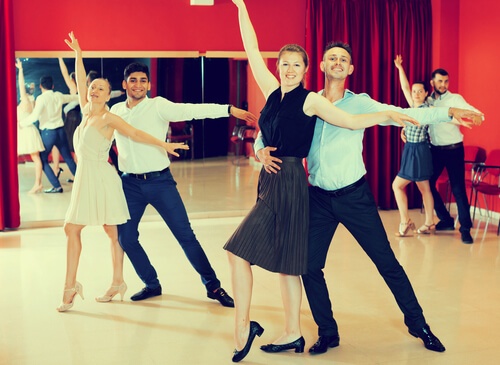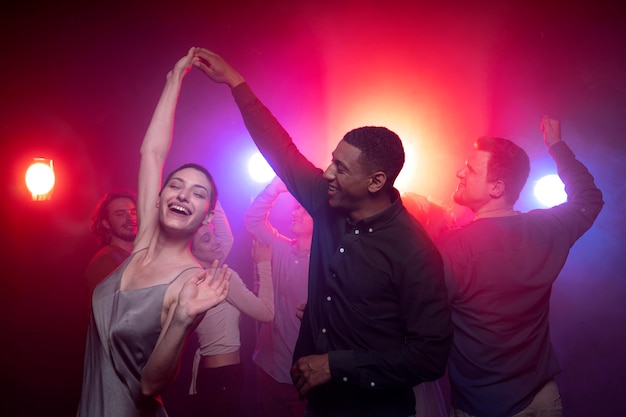
5 Benefits of Learning Both Samba and Salsa Dancing
For ages, individuals have embraced dancing as a pastime all around the world. It’s a wonderful way to express yourself, have fun, and keep fit. Two popular types of dance are samba and salsa. While they have their differences, learning both can offer several benefits. In this blog post, we will be discovering the difference between samba and salsa and highlighting the top five benefits of learning both.
To start discovering the difference between samba and salsa, let’s explore the history and origins of each dance. Samba is a Brazilian dance that has its roots in Rio de Janeiro and is thought to have been influenced by dance and musical traditions from Africa. It’s characterized by its upbeat and lively rhythm and is often danced during carnivals and other celebrations.
On the other hand, salsa originated in Cuba and is a more romantic and sensual dance. It’s known for its intricate footwork and incorporates elements from various Latin American dances, including son, cha-cha, and mambo. Salsa music typically features a combination of percussion instruments, including congas, bongos, and timbales, as well as brass and wind instruments.
Despite their differences, both samba and salsa are popular social dances that require a certain level of skill and coordination. Learning to dance in either style may be enjoyable, fulfilling, and a fantastic mental and physical workout.
Now, let’s dive into the benefits of learning both samba and salsa:
- Increased Physical Fitness
Learning to dance samba and salsa can offer several physical health benefits. These dances require a lot of movement, which can help burn calories and tone muscles, making them a great way to improve overall fitness. Samba is an especially good cardiovascular exercise, as it involves fast footwork and requires a lot of energy, helping to build endurance and stamina.
Contrarily, salsa requires a lot of twisting and turning, which can increase flexibility and balance and help you avoid injuries in other spheres of your life. It can be enjoyable and beneficial to incorporate these dances into your workout programme in order to enhance your physical well-being.
- Improved Coordination
In addition to their physical benefits, samba and salsa can also enhance your coordination and body awareness. Both dances require precise coordination between your feet, hips, and arms, which can be challenging to master but rewarding once achieved. You’ll learn how to move your body in time with the music and your partner as you practice the various steps and motions, which will enhance your general coordination and body control.
These skills can translate to better coordination in other areas of your life, such as sports or everyday activities, making samba and salsa a valuable skill to learn. You can benefit from these dances on a physical and mental level while having fun and learning a new skill by incorporating them into your life.
- Boosted Confidence
Your mental and emotional health can benefit from learning to dance the samba and salsa.
You’ll feel accomplished and proud as you work on your dancing, which can increase your self-confidence and self-esteem. Learning to dance can make you more at ease and self-assured in social settings since dancing is also a social activity. Learning to dance can be a fun and interesting way to meet new people, develop friends, and build a sense of support in a group.
- Improved Mental Health
You can benefit from dancing for both your physical and emotional wellbeing. According to studies, dancing can help people feel less stressed, anxious, and depressed. Samba and salsa lessons can be a thrilling and enjoyable way to enhance your mental health and general wellbeing.
- Social Benefits

As mentioned earlier, dancing is a social activity, and learning samba and salsa can help you meet new people and make new friends. Learning samba and salsa can help you form new social connections. Both dances are often enjoyed in groups, making them an excellent opportunity to meet new people who share similar interests. Participating in a dance class can help you connect with others, allowing you to form new friendships and expand your social circle. Dancing with a partner also provides an opportunity to develop your communication and teamwork skills, as you’ll need to work together to coordinate your movements and rhythm. These skills can translate to other areas of your life, such as work or relationships, making learning samba and salsa a valuable investment in both your social and personal life.
Final Thoughts
Learning both samba and salsa can offer many benefits, from increased physical fitness to improved mental health and social benefits. Learning these two dances can be a terrific way to enhance your general wellbeing, whether you wish to dance for enjoyment or compete professionally. So why not sign up for a dance class today and start reaping the benefits?
Read More On ouji fashion
